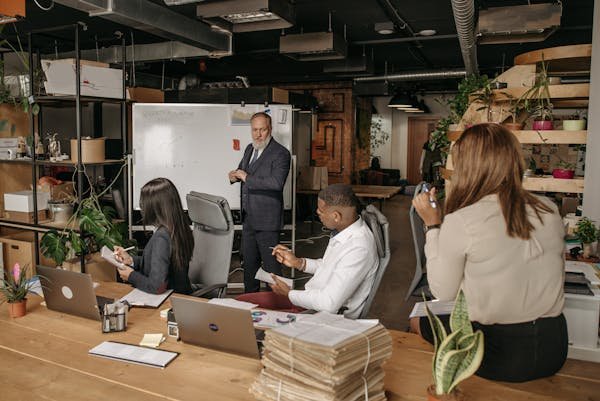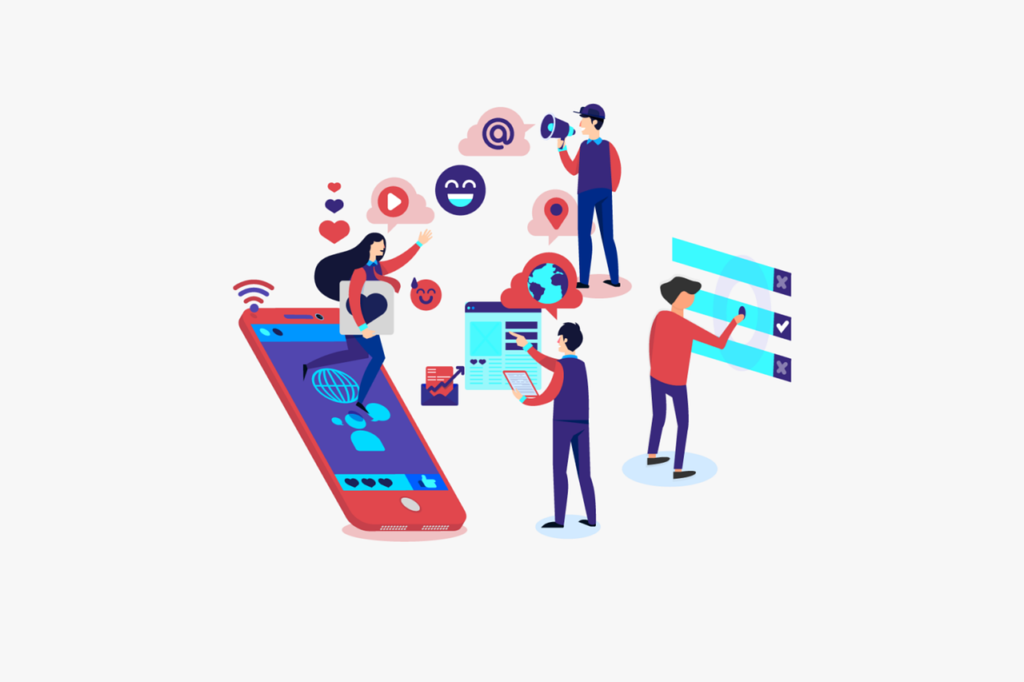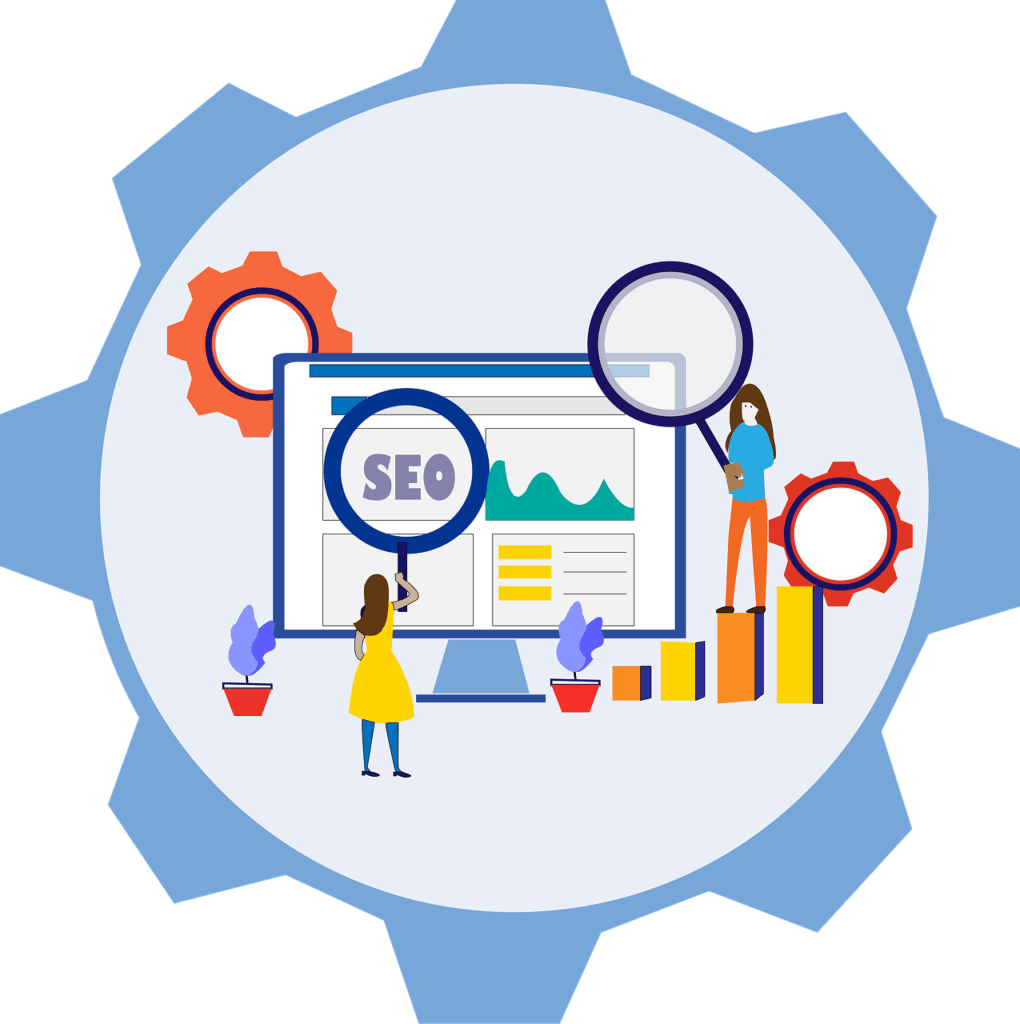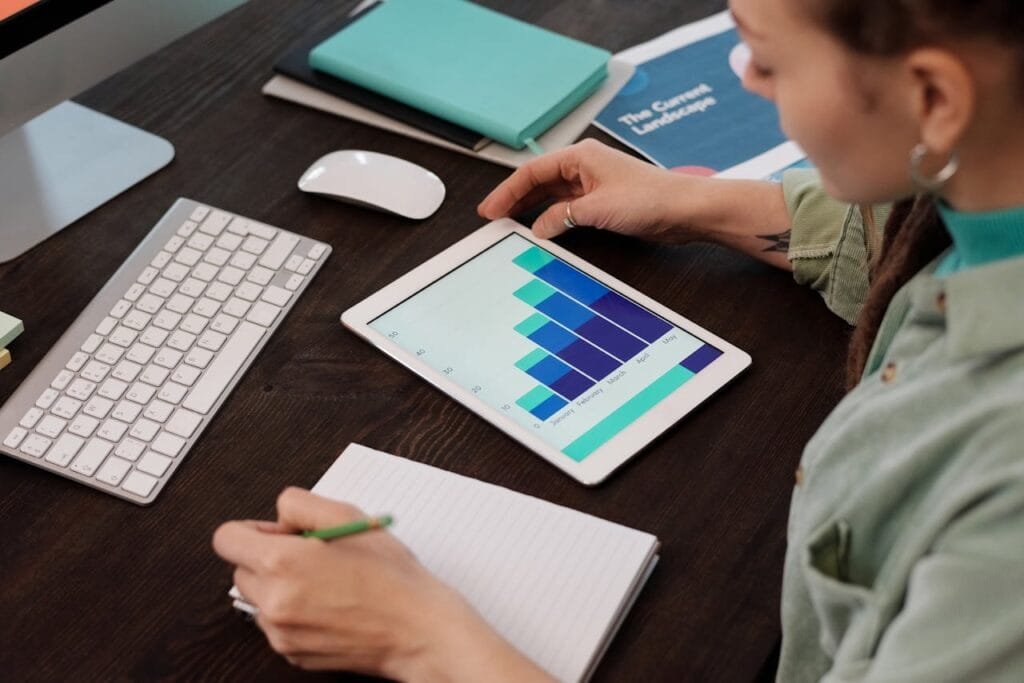Impulse purchases are the secret weapon of successful B2C businesses. Think about it: How many times have you bought something online without planning it, just because it felt like a great deal or was too convenient to pass up? That’s the magic of a well-optimized landing page. It’s not just about showcasing your product—it’s about creating an experience that captures attention, triggers emotions, and makes customers click “Buy Now” without hesitation.
What Makes a Great Landing Page for Impulse Purchases?

A great landing page for impulse purchases doesn’t just sell a product; it creates an irresistible experience that compels customers to act immediately. For startup founders, the key to success lies in designing a page that aligns with the fast, emotion-driven decision-making process of impulse buyers. Every element on the page should work together to minimize friction, amplify urgency, and maximize desire.
First, clarity is paramount. When a potential customer lands on the page, they should instantly understand what’s being offered and why it’s worth their attention. The value proposition should be front and center, articulated in a way that connects emotionally.
Avoid long-winded descriptions or overwhelming details. Instead, use short, punchy statements that emphasize benefits over features. For example, “Look radiant every day with this simple beauty hack” is far more engaging than “An innovative serum with X percentage of Vitamin C.”
A strong call-to-action (CTA) is the linchpin of an effective landing page for impulse purchases. Your CTA needs to stand out visually and use compelling language that creates a sense of urgency. Phrases like “Buy Now,” “Get It Before It’s Gone,” or “Claim Your Discount Today” are far more effective than generic CTAs like “Learn More.” Position the CTA strategically, ensuring it’s visible without scrolling and repeated in different sections of the page for reinforcement.
Speed and simplicity play critical roles. The modern consumer expects a seamless and intuitive experience, especially when making quick decisions. Your landing page should load quickly, as delays can cause potential buyers to lose interest.
Similarly, streamline the checkout process. Remove unnecessary fields or steps, and offer one-click purchasing options if possible. The fewer obstacles between the customer and the purchase, the higher the likelihood of conversion.
Visual hierarchy is another essential component. Impulse buyers are not going to meticulously explore every section of your page—they scan. Design the page to guide their eyes naturally toward key elements.
Use large, bold headlines to draw attention to your main message, followed by supporting visuals or benefits, and finish with a clear CTA. Contrasting colors, directional cues, and strategic placement of whitespace can enhance this flow, ensuring that the most critical elements capture attention first.
Trust-building elements are indispensable for driving impulse purchases. Even when making quick decisions, customers want reassurance that they’re making the right choice. Testimonials, reviews, and trust badges (such as secure payment icons or money-back guarantees) provide this reassurance.
Highlighting phrases like “Loved by thousands” or showcasing ratings and endorsements can create a sense of credibility and reduce hesitation.
For impulse purchases, emotional engagement is the driving force. A great landing page doesn’t just present a product—it tells a story or creates a scenario that resonates with the buyer’s emotions. For instance, a fitness product page might paint a vivid picture: “Imagine waking up with more energy, conquering your workouts, and feeling unstoppable—all with one simple addition to your routine.” This narrative approach makes the product feel aspirational and essential.
Mobile optimization is non-negotiable for modern landing pages. With a significant portion of impulse purchases happening on mobile devices, your page must be responsive and easy to navigate on smaller screens.
Ensure that buttons are large enough to tap, forms are user-friendly, and all elements are optimized for fast loading on mobile networks. Frustrations caused by poor mobile design can quickly deter potential buyers.
Finally, personalization can elevate your landing page to new heights. Using tools like AI or dynamic content, you can tailor elements of the page based on user behavior or preferences.
For example, if the user came from an ad about seasonal discounts, the landing page could display holiday-themed visuals and messaging. Personalization makes the experience feel more relevant and engaging, which is a powerful motivator for impulse purchases.
Understanding the Psychology of Impulse Purchases

Impulse purchases are driven by a blend of emotional triggers and psychological principles. For startup founders aiming to optimize landing pages, understanding this underlying psychology is critical.
It allows you to design pages that not only attract attention but also resonate deeply with the quick, emotion-fueled decisions that define impulse buying behavior. To tap into this psychology, you need to address the key motivations and mental shortcuts that influence how people shop.
One of the strongest drivers of impulse purchases is instant gratification. Customers are wired to seek rewards that bring them immediate satisfaction. When a landing page emphasizes how quickly a product can solve a problem or deliver happiness, it aligns with this psychological need.
For instance, phrases like “Delivered to your door in 24 hours” or “Start feeling the benefits today” create a sense of immediacy that encourages action. By reducing the perceived wait time, you increase the likelihood of conversion.
Scarcity is another powerful psychological trigger that fuels impulse purchases. Customers are more likely to act when they feel that a product is in short supply or that an opportunity might disappear. This is rooted in the fear of losing out on something desirable.
Landing pages that showcase low stock notifications, countdown timers for limited-time offers, or exclusive availability messaging tap directly into this fear of missing out, compelling visitors to act quickly.
Emotional resonance plays a pivotal role in impulse buying. Unlike planned purchases, which are often rooted in logic, impulse buys are emotionally charged. Landing pages need to connect with customers on a visceral level by appealing to their aspirations, desires, or insecurities.
For example, a skincare product might emphasize the confidence customers will feel after achieving radiant skin. Similarly, a fitness gadget might focus on the pride and energy that comes with reaching health goals. By framing the product as a solution to an emotional need, you create a deeper connection that drives action.
Social proof is another critical psychological element. Humans are naturally influenced by the actions of others, especially when making quick decisions. When customers see testimonials, reviews, or indicators that others are buying the product, it reinforces their belief that the purchase is worthwhile.
Real-time purchase notifications like “John from New York just bought this!” or user-generated content showcasing happy customers can add credibility and urgency to the decision-making process.
The principle of anchoring also affects how customers perceive impulse purchases. When shoppers are presented with a higher initial price that’s discounted significantly, they’re more likely to perceive the deal as a valuable opportunity.
A landing page highlighting “Originally $50, now $25—50% off for today only” uses anchoring to create the perception of savings, making the offer feel too good to pass up. This is especially effective for products that are not essential, as it adds a layer of justification to an otherwise spontaneous decision.
Personalization deepens the psychological impact of impulse purchases. When customers see products, offers, or recommendations that feel tailored to them, they are more likely to trust the brand and take action. This personalization can be achieved through dynamic content based on browsing behavior, location, or even previous purchases.
For instance, a returning visitor who previously browsed travel accessories might be greeted with a message like, “Ready for your next adventure? These travel must-haves are on sale now.” Personalization makes the shopping experience feel relevant, increasing the emotional connection and urgency to buy.
Another psychological factor is the low-risk perception of small-ticket items. Impulse purchases are often low-cost products that don’t require extensive deliberation. By emphasizing the affordability or low-risk nature of a product, you can reduce hesitation.
For example, a landing page might state, “For less than the cost of your daily coffee, you can enjoy this amazing gadget.” This comparison makes the purchase feel trivial in terms of financial impact, pushing the customer toward a decision.
Trust and authority also influence impulse buying behavior. Even when making quick decisions, customers want reassurance that they’re buying from a credible source. Highlighting badges like “Secure Checkout,” guarantees such as “30-day money-back promise,” or endorsements from trusted figures adds a layer of psychological safety. This reassures the buyer that their impulse decision won’t lead to regret.
Finally, the novelty factor is a significant driver of impulse purchases. Customers are drawn to new, unique, or innovative products that promise to add excitement to their lives. A landing page can emphasize this novelty by using phrases like “Be the first to try this game-changing product” or “This new arrival is taking the market by storm.” Novelty appeals to curiosity and the desire to experience something fresh, making the product irresistible.
Crafting an Irresistible Headline

The headline is the most critical element of your landing page—it’s the hook that captures attention and sets the tone for the entire experience.
For impulse purchases, a headline must do more than simply describe the product; it needs to create intrigue, evoke emotion, and spark an immediate desire to learn more. For startup founders, crafting a compelling headline requires a deep understanding of your target audience and their motivations.
A great headline for an impulse-purchase landing page grabs attention by addressing a specific need or desire. Instead of simply stating what the product is, focus on what it does for the customer.
For example, rather than “Premium Yoga Mat,” a headline like “Find Your Zen with the Ultimate Comfort of Our Yoga Mat” connects the product to an emotional outcome. This approach frames the product as a solution to a problem or a gateway to a better experience, making it more compelling.
Emotionally charged language is a powerful tool when creating headlines for impulse purchases. Words like “transform,” “revolutionize,” “exclusive,” and “limited” evoke a sense of excitement and urgency. For example, “Transform Your Morning Routine with Our Revolutionary Coffee Maker” doesn’t just describe the product—it promises a better life. Using emotion-laden words helps create a personal connection that resonates with customers, making them more likely to engage.
Urgency and scarcity are crucial for driving immediate action, and your headline should reflect this. Adding time-sensitive language like “Today Only,” “Limited-Time Offer,” or “Ends at Midnight” can create a sense of FOMO (fear of missing out).
For instance, a headline like “Hurry—50% Off Ends Tonight!” taps into the impulse buyer’s fear of losing a valuable opportunity. For startup founders, this tactic can help drive quick conversions, especially during promotional campaigns.
Social proof can also be incorporated into your headline to boost its effectiveness. Referencing how popular the product is or highlighting customer satisfaction can build credibility and curiosity.
A headline like “Join 10,000 Happy Customers Loving Our Best-Selling Skincare Serum” immediately conveys trust and popularity. Customers making impulse purchases are more likely to follow the crowd, so showing that others love your product can nudge them toward a decision.
Personalization is another strategy to consider when crafting headlines. If you have data on your audience’s preferences or behavior, use it to make the headline feel tailored to them.
For example, if you’re targeting a health-conscious audience, a headline like “Achieve Your Health Goals with Our Organic Superfood Bundle” speaks directly to their aspirations. This level of relevance increases the emotional impact of your message.
Curiosity is a powerful motivator, and an intriguing headline can make visitors want to learn more. Posing a question or hinting at a benefit they didn’t know they needed can draw them in. For example, “What’s the Secret to Perfectly Clear Skin? Discover It Here” teases the solution while sparking interest. This tactic works well for impulse purchases because it invites exploration without requiring a major commitment upfront.
Simplicity is equally important in headline creation. While it’s tempting to pack in as much information as possible, a cluttered or confusing headline can deter customers. Instead, focus on a single, clear message that resonates instantly. A headline like “Instant Relief for Sore Muscles” communicates the product’s primary benefit in just a few words, making it easy for customers to grasp and act upon.
Testing is a vital part of refining your headline. Small tweaks in phrasing, tone, or structure can significantly impact conversion rates. A/B testing different versions of your headline allows you to determine what resonates best with your audience.
For example, you might test “Hurry—Flash Sale Ends at Midnight!” against “Exclusive Deals You Can’t Miss—Today Only!” to see which drives more clicks. Data-driven adjustments ensure your headline consistently performs at its best.
Designing Visually Compelling Landing Pages

A visually compelling landing page is essential for driving impulse purchases. Startups have a unique opportunity to use design strategically, ensuring that every visual element works to capture attention, spark desire, and guide users toward completing a purchase.
For impulse purchases, where decisions are quick and emotionally driven, the visual design needs to do the heavy lifting in creating an experience that feels seamless and irresistible.
The first impression of your landing page matters immensely. Customers should immediately feel drawn in by the visuals, with a layout that conveys professionalism, credibility, and excitement. High-quality imagery is a cornerstone of this strategy.
Crisp, detailed product photos that showcase the item from multiple angles help build trust and reduce hesitation. If the product solves a problem, consider including images that highlight its practical use or before-and-after transformations. These visuals give customers a tangible sense of what they can expect, making the decision to purchase easier.
Lifestyle imagery is another effective way to create emotional resonance. By showing your product in real-world settings or being used by relatable people, you help potential buyers envision it as part of their lives.
For example, a kitchen gadget could be featured in a cozy cooking scene, or a piece of clothing could be displayed in a vibrant, social environment. These types of visuals create an aspirational pull, showing not just the product but the experience or lifestyle it represents.
Incorporating motion into your visuals can also be highly impactful. Videos or GIFs that demonstrate how a product works, its key features, or the unboxing experience can quickly engage users and convey information that static images cannot.
For example, a skincare brand might show the texture of a cream being applied or the glow it provides. Motion grabs attention, holds it longer, and helps customers feel more informed, which is critical for impulse decisions.
The color scheme of your landing page plays a subtle yet powerful role in shaping perception and driving action. Bright, vibrant colors like red and orange are often associated with energy and urgency, making them ideal for creating excitement around limited-time offers.
Softer hues like pastel greens or blues can evoke trust and calm, which are beneficial for products that require reassurance. The key is to use color strategically to align with the emotions you want to elicit and to guide users’ eyes toward important elements, like the call-to-action button.
Typography is another overlooked aspect of visual design that can significantly influence a landing page’s effectiveness. Fonts should be easy to read, even on mobile devices, and should reflect the tone of your brand. Bold, modern fonts can convey confidence and urgency, while softer, serif fonts might suggest elegance or tradition.
The size and placement of text should prioritize readability, especially for headlines and key benefits. Avoid cluttering the page with long paragraphs; instead, use short, scannable text blocks that complement the visuals.
Whitespace is a powerful design tool that allows important elements to stand out. By leaving intentional gaps around your product images, headlines, or CTAs, you direct attention where it matters most.
A clutter-free layout not only looks professional but also reduces cognitive load, making it easier for users to focus on the value proposition and take action. Whitespace gives your page a clean, sophisticated feel, which is particularly important for impulse purchases where quick trust-building is essential.
Trust-building elements like badges, testimonials, and ratings should be visually integrated into the design without overwhelming the user. Consider placing a “100% Money-Back Guarantee” badge near the CTA button or highlighting a five-star customer review directly beneath the product image. These visual cues reassure visitors of the credibility and quality of your product, reducing hesitation and boosting confidence in their decision to buy.
The layout of your landing page should be structured to guide the user through a clear journey. A strong visual hierarchy ensures that the most important elements—such as the product image, headline, and CTA—stand out immediately.
Use directional cues like arrows or lines to subtly guide users’ eyes toward the CTA. For example, a product image might be angled to “point” toward the button, or a color gradient might lead the user’s gaze down the page. This intentional flow keeps the focus on conversion-driving elements.
For mobile users, optimizing visuals and layout is especially crucial. With limited screen space, prioritize large, high-quality images and ensure that text and buttons are easily clickable. Scrolling should feel smooth, with sections of the page broken into digestible chunks. Test your landing page on multiple devices to confirm that the visual experience is consistent and engaging across all screen sizes.
Finally, visual consistency is key to maintaining credibility and brand identity. Every element on your landing page, from colors and fonts to imagery and icons, should align with your overall brand aesthetic. A cohesive design makes the page feel polished and intentional, which helps build trust and encourages impulse buyers to follow through with their purchase.
Writing Persuasive Product Descriptions

Crafting persuasive product descriptions is an art, especially when aiming to drive impulse purchases. For startup founders, it’s essential to recognize that impulse buyers aren’t spending a lot of time analyzing specifications or comparing alternatives.
They’re looking for a compelling reason to click “Buy Now,” and your product description must deliver that reason quickly and convincingly. It’s not just about listing features; it’s about weaving a narrative that connects emotionally, solves a problem, or fulfills a desire.
One of the most effective ways to create persuasive product descriptions is to focus on benefits rather than features. While features tell customers what a product is, benefits show them why it matters.
For instance, if you’re selling a compact blender, instead of saying “500-watt motor,” highlight what that means for the user: “Blend smoothies and crush ice in seconds, making your mornings faster and easier.” This approach shifts the focus from technical details to tangible outcomes that improve the customer’s life.
Emotion-driven language is critical for impulse purchases. Descriptions should tap into how the product will make customers feel, emphasizing excitement, convenience, or fulfillment. Phrases like “Experience the joy of effortless cooking,” “Turn heads wherever you go,” or “Finally, a solution that works for you” connect with customers on a personal level. Emotional language creates a sense of aspiration, making the product feel indispensable.
Creating a sense of urgency within the description can also encourage immediate action. Phrases such as “Only available for a limited time,” “Don’t miss out on this exclusive offer,” or “Be one of the first to own this game-changer” push customers toward making a quick decision. For impulse buyers, the fear of missing out can be a powerful motivator, and your product description can reinforce this sense of urgency.
Storytelling adds another layer of persuasion to product descriptions. Instead of simply stating what the product does, create a mini-narrative that places the customer at the center of the experience.
For example, a description for a travel bag might read, “Imagine breezing through the airport, knowing your essentials are perfectly organized in a sleek, stylish bag designed to keep up with your adventures.” This paints a vivid picture that helps the customer visualize themselves using the product, making the purchase feel more personal and inevitable.
Incorporating social proof within your product description can boost credibility and reassure potential buyers. Mentioning how many people have purchased or loved the product, sharing a standout customer testimonial, or highlighting awards and endorsements adds an element of trust.
For instance, “Join thousands of satisfied customers who swear by our best-selling gadget” signals that the product is already a proven hit.
Conciseness is key for impulse purchase descriptions. Buyers aren’t looking for long, detailed paragraphs—they want quick, digestible information that gets to the point. Break up your descriptions into short sentences or phrases, and use formatting techniques like bold text or italics to emphasize key points.
For example, “Compact design. Powerful performance. Ready to go wherever life takes you.” Each phrase is quick to read and packs a punch, keeping the reader engaged.
Visual elements can complement your descriptions and make them even more persuasive. If space allows, include icons, charts, or callout boxes to highlight key benefits. For instance, pairing a short description with an icon that reads “30-Day Money-Back Guarantee” reassures the customer while reinforcing the value proposition. Infographics or before-and-after visuals can also amplify the effectiveness of your descriptions, providing instant context without requiring extra words.
Finally, your product description should align with your brand’s voice and target audience. A playful, energetic tone might resonate with a younger, trend-focused audience, while a professional, solution-oriented tone could work better for tech-savvy or business-focused customers.
For example, a description for a trendy phone case might say, “Protect your phone in style with a splash of personality,” whereas a description for a business laptop case might emphasize durability and practicality: “Engineered for the modern professional, this case delivers unmatched protection and sleek sophistication.”

Conclusion
Optimizing landing pages for B2C impulse purchases is both an art and a science. It’s about understanding the emotional triggers that drive snap decisions and crafting a seamless experience that aligns with those motivations. For startups, this is an opportunity to stand out, build trust, and capture attention in a competitive e-commerce landscape.





















